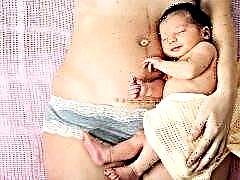
Women who have undergone a cesarean section may well bear and give birth to one, two, three or more children. True, bearing a fetus, its well-being, the ability to give birth in the future on its own, without the help of surgeons, predictions for planning a subsequent pregnancy directly depend on such a thing as a scar on the uterus. The scar remains, it is inevitable. In this article, we will tell you how a scar is formed, what determines its consistency or failure, how to be examined and what are the norms for scar thickness.
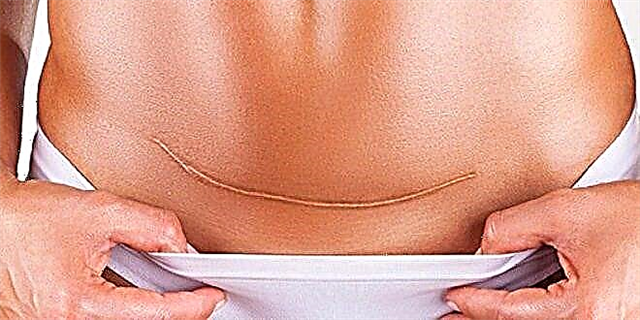
How is it formed?
When performing a caesarean section, the fetus and afterbirth are removed through an incision in the uterus. The incision can be vertical if the child needs to be removed as quickly as possible (in some cases with an emergency CS) or horizontal in the lower segment of the uterus during elective surgery. After dissection, the edges in the area of the incision are pulled together and sutured with special self-absorbable surgical sutures. A scar is formed at the site of the incision from this moment and within about 2 years.
Within a day after the cesarean section, collagen bundles and fibrin threads lead to adhesion of the cut edges. In the place of adhesion, new myocytes begin to form - cells of the uterine tissue, small blood vessels are formed. After a week, elastic fibers appear, collagen is produced. The formation of new uterine cells is completed approximately three weeks after surgery. This is an ideal scenario, but in practice things may be slightly different.
When exposed to negative factors, areas of growth of hyalinized tissue are found among new myocytes. The proportion of coarse connective tissue predominates. Sometimes sclerotic processes are observed around the formed blood vessels and in adjacent tissues. This often leads to the formation of a pathological keloid scar.
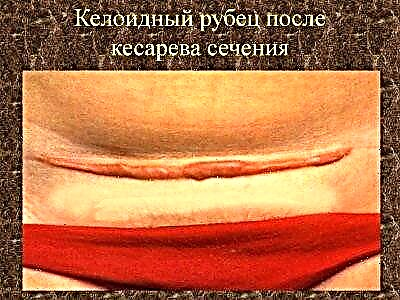
In this case, it does not matter whether it is longitudinal or transverse. Such a scar not only looks unsightly (this can be seen by diagnostic doctors), but is also undesirable for planning pregnancy. The reasons why the scar is formed with a predominance of connective rough tissue, or the production of myocytes is insufficient, are numerous and not fully understood. It is generally accepted that this process can be influenced by:
- complications in the postoperative period, infections, inflammation;
- the state of the microflora of the genital tract of the postpartum woman;
- the general health of a woman even before childbirth;
- the place of the incision and the technique of applying internal sutures, the skill of the surgeon.
Also, the risk of the formation of an insolvent scar in women increases, the reasons for the operation in whom were premature placental abruption, its full presentation, a long anhydrous period, as well as severe gestosis, obesity and prolonged anemia. All these nuances after surgery lead to a state of temporary severe immunodeficiency crisis, which leads to improper healing of the incision site in the uterus.
Consistency and failure - norms
When a cesarean was a relative rarity, the question of the consistency or failure of the scar was almost not raised. Now the proportion of operative deliveries has increased, therefore, the number of multiparous with a scar on the uterus is also about 15-20%. Despite these impressive figures, there is no single standard in Russia by which a scar can be considered a wealthy or inferior scar. While this question is left to the discretion of the doctor, the opinions of doctors can be very different.
They are similar only in that a scar should be considered to be wealthy, which is homogeneous throughout its entire length, does not contain thinning, areas of pathological proliferation of connective tissue. In all other respects, the best medical minds of the planet have not yet come to a common opinion.
Russian scientists and practicing surgeons Lebedev and Strizhakov have devoted several years to the clinical and morphological study of excised scar tissue, which was obtained during repeated CS operations. The result of their work was the following data on the permissible thickness of the scar in the norm:
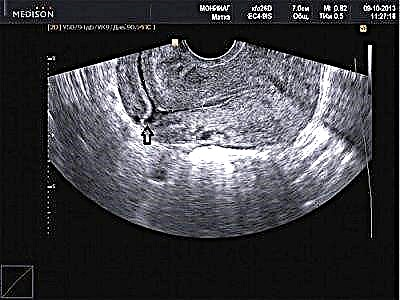
The World Health Organization (WHO), based on the results of European studies, claims that the minimum permissible thickness of a wealthy scar, in which even repeated natural childbirth is quite possible (if only one cesarean section was previously performed), is 3.5 mm (for a period from 36 to 38 weeks). The formation of a smaller thickness is not recommended to be considered untenable, but independent childbirth is undesirable.
In Canada, for example, it is generally accepted practice to measure the scar only for those pregnant women who are going to give birth in a completely physiological way - through the birth canal. At 38 weeks, a thickness of 2 mm is considered acceptable. And in Switzerland, the permissible thickness before childbirth is 2.5 mm. For non-pregnant women who are just thinking about having another baby, in Russia, by default, it is considered normal to be more than 2.5 mm thick. Anything less significantly increases the risk of uterine rupture, not only during contractions, but also long before them - while carrying a child.
Some diagnosticians are in complete confidence that the thickness itself has little effect on the likelihood of rupture of the reproductive organ, it is the uniformity along the entire length that is important. This is indirectly confirmed by practice: sometimes women with a 2 mm scar perfectly carry a child, which appears on time by repeated CS, and with a 5 mm scar, but heterogeneous, serious problems arise.
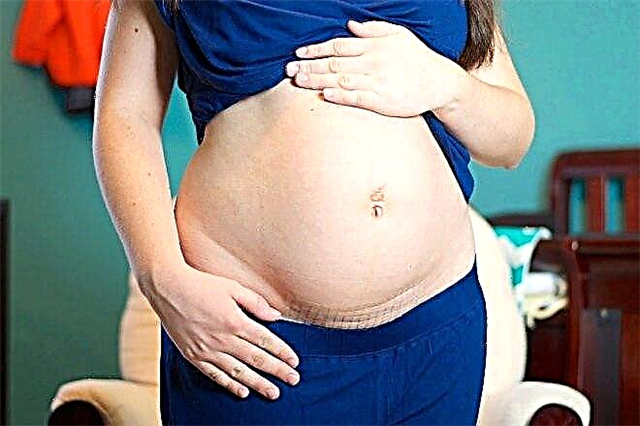
It should be noted that any scar on the uterus increases the likelihood of a pathological pregnancy. Common pathologies due to a scar are as follows:
- miscarriage;
- infertility;
- delayed fetal development;
- placenta previa;
- the risk of early detachment of the "child's place";
- fetoplacental insufficiency;
- total ingrowth of the placenta into the scar area may require the removal of the "child's seat" along with the uterus.
The most dangerous is rupture of the uterus. The genital organ grows with the baby, the uterine tissue is stretched, there is less collagen and myocytes in the scar area, and therefore the scar itself is stretched very, very badly. Rupture of the uterus during pregnancy leads to severe internal bleeding, often to the death of the mother and fetus. If the rupture occurs in childbirth, there is a chance of salvation.

Diagnostics
With the diagnosis of the condition of the scar in Russia and in the world, everything is not the best way. Overdiagnosis prevails, when a woman with a well-to-do scar of 6 mm is told by the doctor about the likelihood of rupture and persuades to have an abortion so as not to risk it. This is an understandable consequence of the lack of uniform standardization in determining the viability of scars.
Nevertheless, it is necessary to examine his condition. And it is advisable to start this already 8-9 months after the operation. It is believed that it is at this time that the scar "reveals" all its "surprises" to the diagnostician. In any case, before planning a pregnancy, it is advisable to visit a doctor and insist on examining the inner seam on the uterus.

In the second half of pregnancy, it is recommended to know the thickness and structure of the scar at least once every 3 weeks, and in the last month - once every 10 days.
What diagnostic methods are there?
Ultrasound
This method is one of the most widespread, although its effectiveness for these purposes raises many questions in the professional community. Nevertheless, the examination of the scar for consistency and the ability to withstand another pregnancy should be started with ultrasound diagnostics. An examination is carried out with both a transabdominal and a transvaginal sensor. The indicators of intravaginal examination are considered more reliable.
The doctor will determine the extent of the scar, be able to measure the thickness of the residual muscle layer, and determine the niche space under the scar. The doctor will declare an insolvent scar if the niche is 50% or more in depth with the residual muscle layer.
Ultrasound results cannot be considered 100% reliable. The specialists of ultrasound diagnostics themselves say that they are making only a preliminary or auxiliary contribution to the diagnosis of scar tissue.
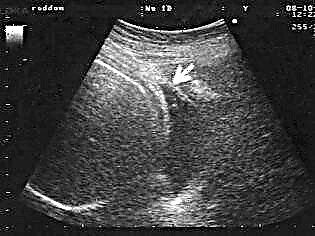
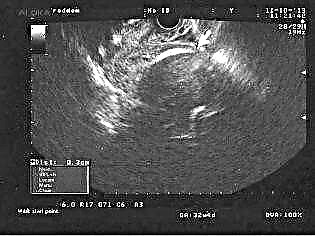
But it is clearly not worth forbidding a woman to give birth or insist on terminating pregnancy due to a thin scar according to the results of ultrasound. More detailed information on ultrasound about the condition of the scar after cesarean can be obtained before pregnancy and in the first trimester. At the end of pregnancy, adequate assessment is difficult.
Hysterography
Quite an effective method for assessing the scar, but with its own nuances. It is carried out only for non-pregnant women, since it involves contact with X-rays. In fact, the method is an X-ray of the uterus and its tubes using a contrast agent.
The procedure with an accuracy of 97% makes it possible to see the signs of pathological scarring, but the method does not allow to determine the true cause of what is happening and make predictions. For example, the diagnosis of "postoperative scar endometriosis" on the basis of the received X-ray picture will not work, it is possible that you will need to do an MRI of the uterus. An inconsistent scar may be indicated by a slight forward displacement of the uterus according to the results of hysterography, unevenness and jaggedness of the contours, defects in filling the uterus with a contrast solution.
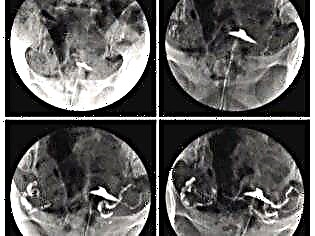
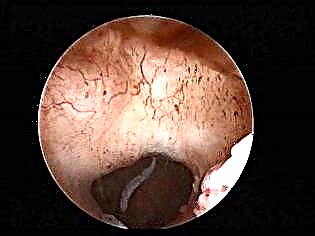
Hysteroscopy
This method also implies the absence of pregnancy at the time of the examination. An optical device (part of a hysteroscope) is inserted into the uterus, and on the screen the doctor sees everything that happens inside the reproductive organ. This method is considered one of the most accurate to date. An incompetent scar on the uterus looks like a whitish streak (if the connective tissue is predominant), retractions can be noticeable (if the scar is thin).
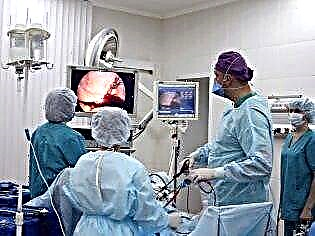
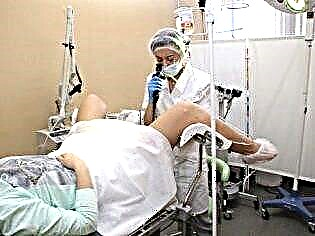
Treatment
It is not accepted to treat the scar, there are no methods. If it is found that the ovum is attached to it, then an abortion will be strongly recommended. In other cases, doctors will take into account the peculiarities of the scar in order to manage the pregnancy and plan the delivery technique. Severe inconsistent scars can only be removed surgically. For this, the woman will need another excision operation, but no one will give guarantees that the new scar formed in a couple of years will be more prosperous.
According to the reviews of women and doctors, such a complication as uterine rupture is not so common in practice. But it would be irresponsible to ignore this risk. A woman should not despair even if the doctors say that she is the owner of a seam of an insolvent. There are clinics and individual doctors who specialize in managing pregnancies with problematic uterine sutures. Since there are no standards, as we found out, there is always hope.

It is only important to maintain the time interval - not to become pregnant earlier than 2 years after the previous cesarean section, to follow all the doctor's recommendations in the postoperative period. This will significantly increase the chances of a successful re-pregnancy.
For a scar on the uterus after a cesarean section during a subsequent pregnancy, see the following video.



